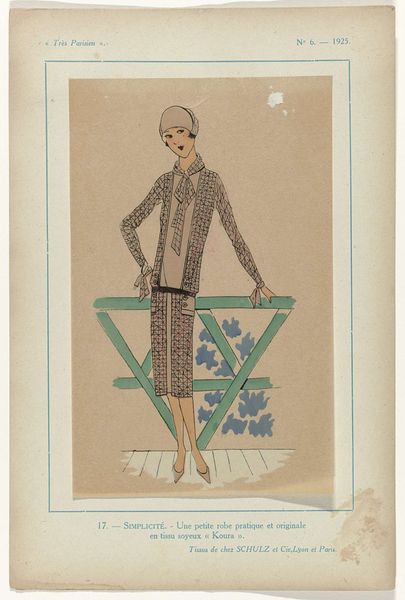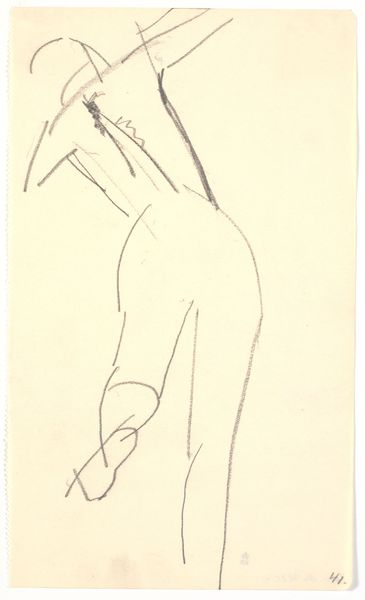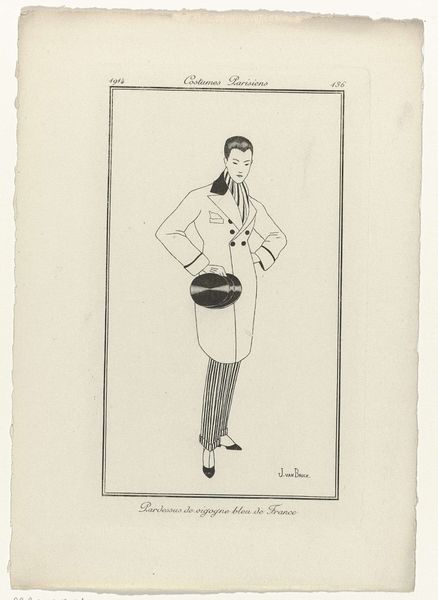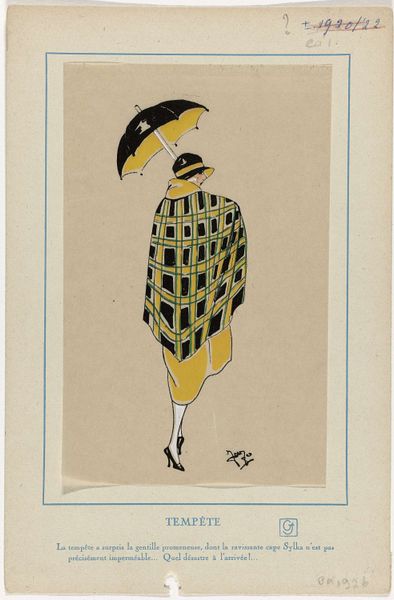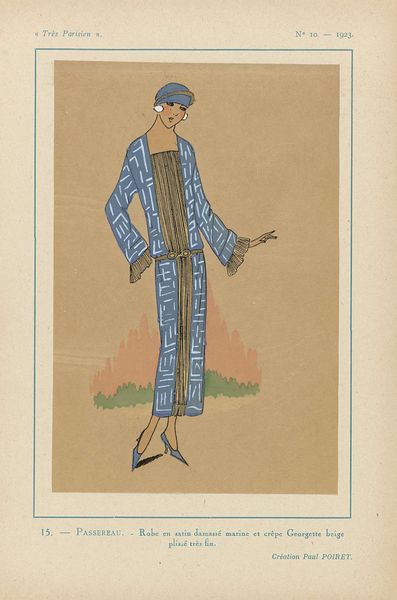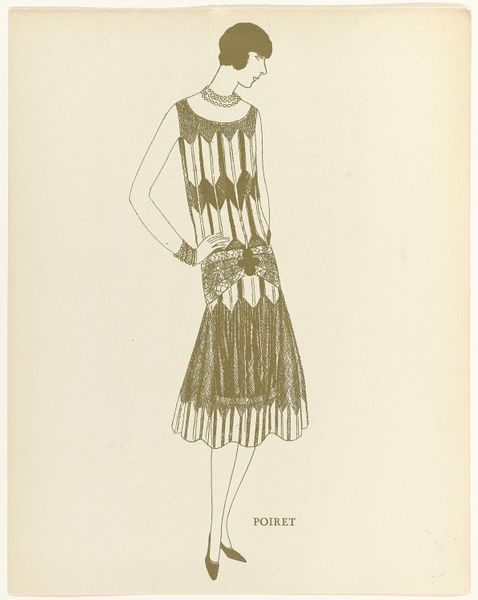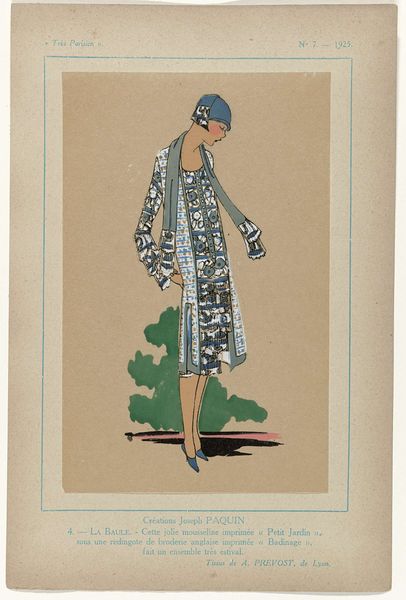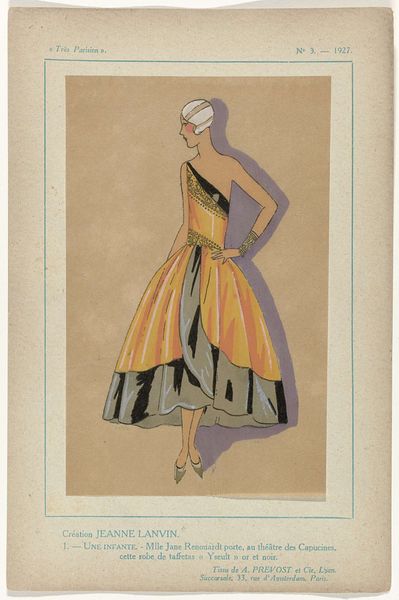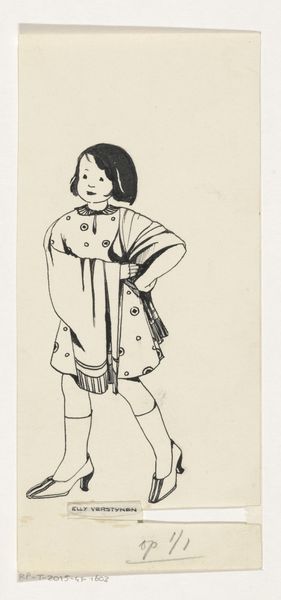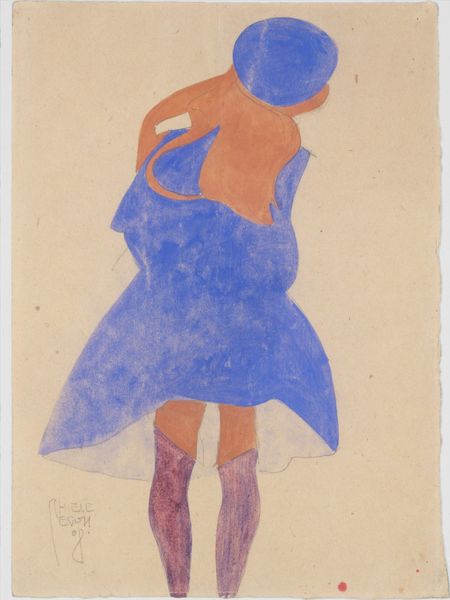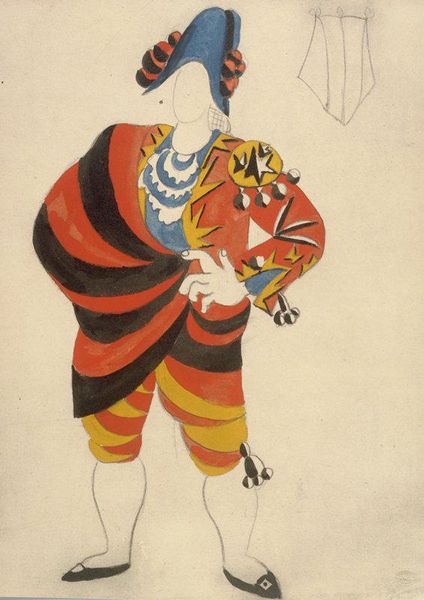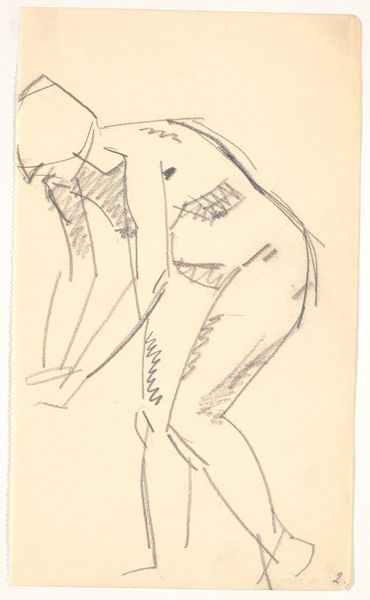
drawing
#
portrait
#
drawing
#
cubism
#
figuration
#
costume
Dimensions: 30.5 x 22.5 cm
Copyright: Fernand Leger,Fair Use
Editor: Okay, so this drawing is called "Draft costume (Front)," created in 1929 by Fernand Léger. It seems to be a costume design using ink and pencil. I find its simplicity quite striking, but also a bit... unsettling? It’s like a simplified, almost robotic figure. What do you make of it? Art Historian: That’s a keen observation. Léger, heavily influenced by Cubism and his experience in World War I, was fascinated by machinery and modern life. How do you think this interest manifests itself in this design? Editor: Well, the geometric shapes are obvious. And the way the body is just outlined...it's dehumanizing almost. The harlequin pattern also is interesting because I feel like the circus often becomes entertainment for the working class, but with its connection to cubism is he sort of elevating or changing our concept of costume here? Art Historian: Precisely! Consider Léger's broader artistic aims. He believed art should be accessible to all, a kind of "art for the people," rather than confined to elite circles. In the 1920s, there was this really intense pursuit to bridge the gaps in wealth, to democratize experiences such as entertainment. How might that relate to designing a costume in this simplified, geometric way? Editor: Hmmm… so he's making art, even costume design, relevant to everyday life, to mass culture? This pattern looks very mass-produced because of how perfectly aligned all the diamonds are in order. Is he critiquing this trend or agreeing? Art Historian: Good question! By stripping away ornamentation and focusing on essential forms, Léger aimed to celebrate the beauty found in industrial aesthetics and the machine age but simultaneously may point at the flaws of society with it. Editor: I see. It’s not just a costume design, it's a statement about art, society, and the changing role of the artist. Art Historian: Exactly! The costume itself becomes a kind of social commentary. And hopefully through works like these we can explore questions on the politics and performance within art. I think by digging a bit deeper here I was able to grow in my analysis on cubism! Thank you.
Comments
No comments
Be the first to comment and join the conversation on the ultimate creative platform.
